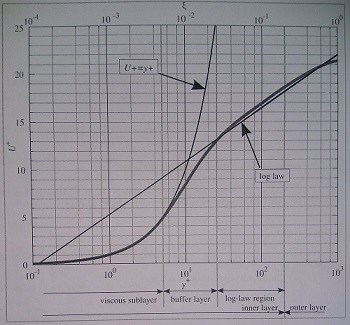What is Y+ (Y plus) in CFD?
What is a y +(plus) value ?
y+ is a non dimensional quantity. It is a very important quantity in turbulence modelling to determine the proper size of mesh cells near the boundary walls. So it describes the quality of mesh near the boundary wall, weather it is very fine or it is coarse. y+ is defined as {y^ + } = \frac{{u*\Delta y}}{\gamma }
Here {\Delta y} is the distance between first cell centroid and the wall. {u*} is the friction velocity at the closest wall.\gamma is the kinematic viscosity. u* is defined as u* = \sqrt {\frac{{{\tau _w}}}{\rho }} Here {{\tau _w}} is directly computed as a function of skin friction coefficient . \rho is the density of the fluid flowing over the body. Also dimensionless velocity ‘u’ is {u^ + } = \frac{u}{{u*}} Here u is the actual flow velocity.
y+ value defines the zones in turbulent boundary layer. For viscous sub layer / Linear sub layer or laminar sub layer y+ value is 1 to 5. For buffer zone y+ value is 5 to 30.For log-law region y+ value is 30 to 300. Wake region or fully turbulent outer core region has a y+ value of more than 300. y+ value is useful for near wall flow modelling.
 Zones in the turbulent boundary layer
Zones in the turbulent boundary layer




